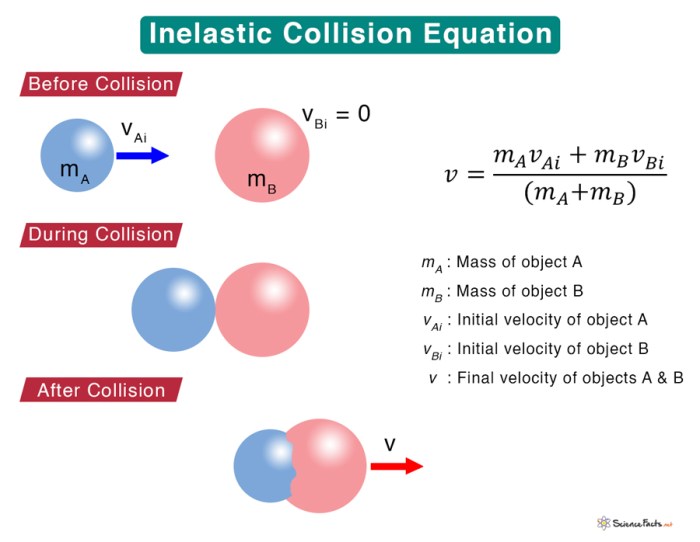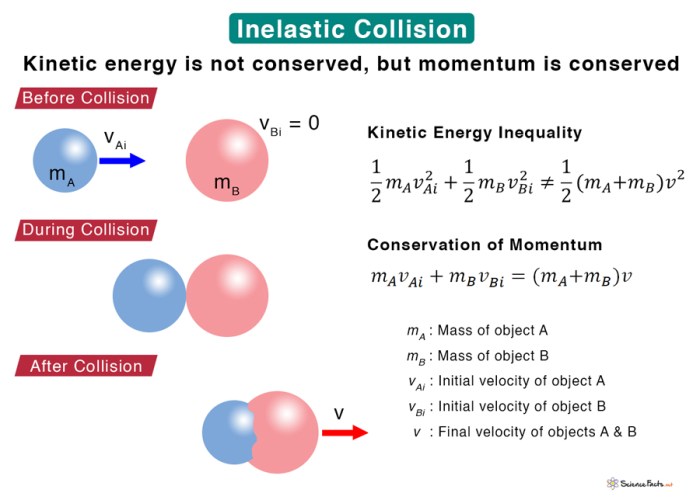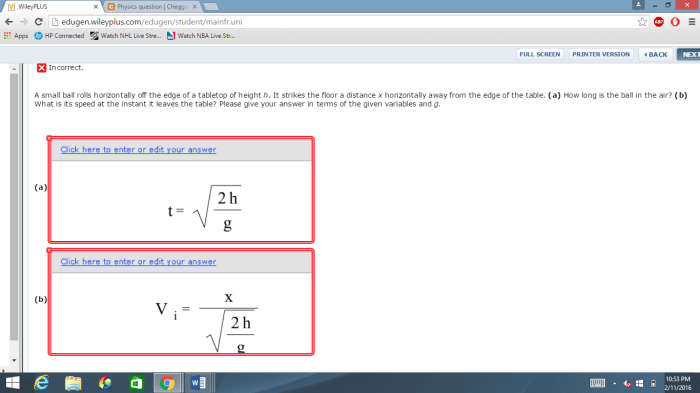In the realm of physics, collisions play a pivotal role in understanding the interactions between objects. After a completely inelastic collision, the objects involved stick together, resulting in a unique set of momentum and energy dynamics. This article delves into the intricacies of completely inelastic collisions, exploring the conservation principles, types, coefficient of restitution, and practical applications that shape our understanding of this fascinating phenomenon.
The concept of momentum and energy conservation provides a fundamental framework for analyzing completely inelastic collisions. These principles dictate that the total momentum and kinetic energy of the system remain constant before and after the collision, offering valuable insights into the behavior of the objects involved.
Momentum and Energy Conservation: After A Completely Inelastic Collision

In a completely inelastic collision, the objects involved stick together and move as a single object after the collision. This means that the total momentum of the system is conserved, but the total kinetic energy is not.
The conservation of momentum can be expressed as:
m1v 1i+ m 2v 2i= (m 1+ m 2)v f
where m 1and m 2are the masses of the objects, v 1iand v 2iare their initial velocities, and v fis their final velocity after the collision.
The conservation of energy can be expressed as:
(1/2)m1v 1i2+ (1/2)m 2v 2i2> (1/2)(m 1+ m 2)v f2
where the inequality sign indicates that some of the kinetic energy is lost due to the collision.
Types of Inelastic Collisions
- Perfectly inelastic collision: In a perfectly inelastic collision, the objects stick together and come to a complete stop after the collision. This means that the total kinetic energy of the system is completely lost.
- Partially inelastic collision: In a partially inelastic collision, the objects stick together but do not come to a complete stop after the collision. This means that some of the kinetic energy of the system is lost, but not all of it.
The coefficient of restitution is a measure of the elasticity of a collision. It is defined as the ratio of the relative velocity of the objects after the collision to their relative velocity before the collision.
The coefficient of restitution can be calculated using the following formula:
e = (v2f
- v 1f)/(v 1i
- v 2i)
where v 1fand v 2fare the final velocities of the objects after the collision, and v 1iand v 2iare their initial velocities before the collision.
The coefficient of restitution can range from 0 to 1. A coefficient of restitution of 0 indicates a perfectly inelastic collision, while a coefficient of restitution of 1 indicates a perfectly elastic collision.
Applications of Inelastic Collisions, After a completely inelastic collision
- Sports: Inelastic collisions are common in sports, such as baseball, football, and hockey. The coefficient of restitution of a ball or puck can affect the outcome of a game.
- Engineering: Inelastic collisions are used in a variety of engineering applications, such as car bumpers and crash barriers. The coefficient of restitution of these materials can help to reduce the damage caused by a collision.
- Transportation: Inelastic collisions are also used in transportation, such as airbags and seat belts. The coefficient of restitution of these materials can help to protect passengers in the event of a collision.
FAQ Compilation
What is the key difference between elastic and inelastic collisions?
In elastic collisions, the objects bounce off each other without any loss of kinetic energy, while in inelastic collisions, some kinetic energy is lost due to deformation or other factors.
How does the coefficient of restitution affect the behavior of objects after a collision?
The coefficient of restitution is a measure of the elasticity of the collision, and it determines the amount of kinetic energy lost during the collision.
Can completely inelastic collisions occur in real-world scenarios?
Yes, completely inelastic collisions occur frequently in everyday life, such as when two cars crash into each other and stick together.



